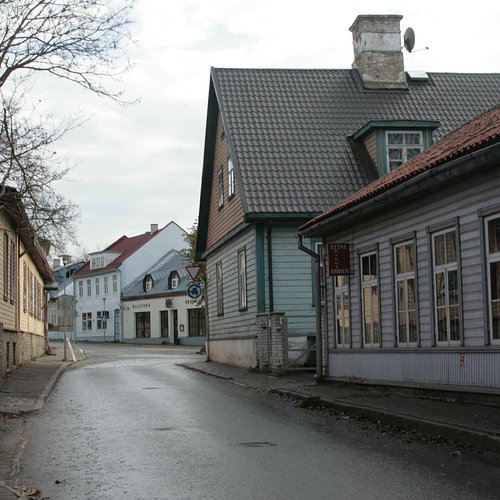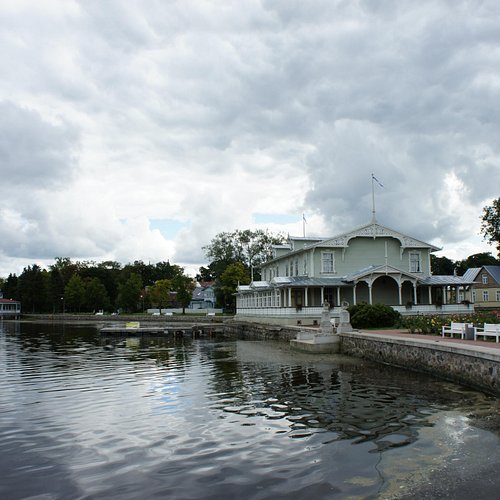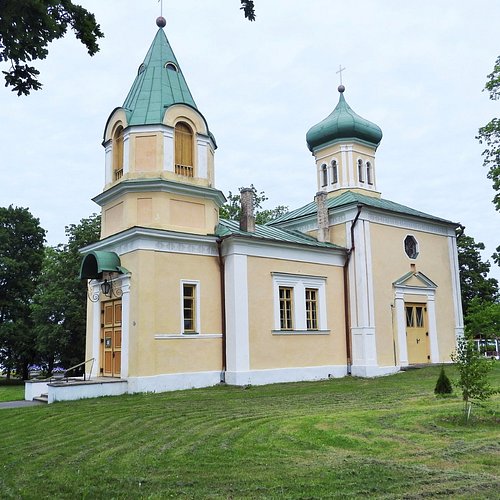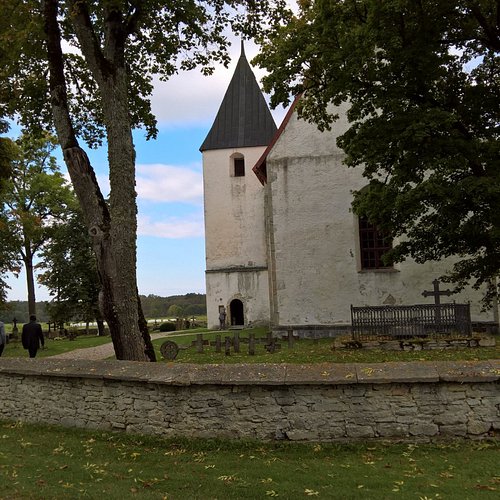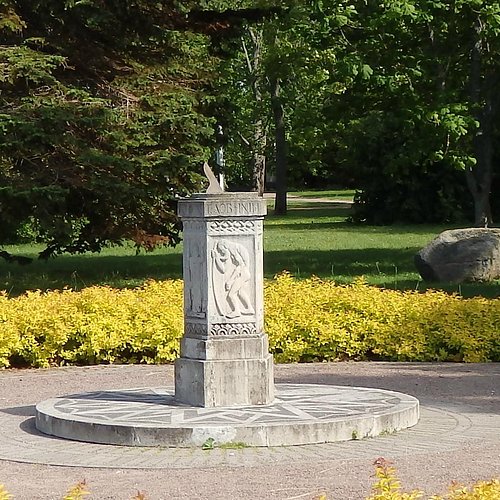The 10 Best Sights & Landmarks in Haapsalu, Laane County
Haapsalu (Estonian pronunciation: [ˈhɑːpˈsɑlu]) (Swedish and German: Hapsal) is a seaside resort town located on the west coast of Estonia. It is the administrative centre of Lääne County, and on 1 January 2017 it had a population of 10,236.
Restaurants in Haapsalu
1. Haapsalu Castle
Overall Ratings
4.5 based on 176 reviews
The Episcopal castle in Haapsalu is a park for the ruins of a former stronghold. It is an architectural pearl dating from the 13th century that used to be the residence of local authorities until the end of the 17th century. This is the place where Estonia's most famous ghost - the eternal lover the White Lady - lives. At present the main building of the castle hosts a museum that gives an overview of the history of the stronghold and Oesel-Wiek Bishopric, the weaponry used in the medieval and early modern period and the ashlar found in the castle. The most important sights of the museum include the cathedral of the former Oesel-Wiek Bishopric located in the south wing of the castle, which was first mentioned in written records in 1279, and the watchtower now used as a belfry. While in the main fortress, one can enjoy a nice view overlooking Haapsalu and the surrounding sea. Historic fortresses have, over the course of time, been turned into parks. This is a unique symbiosis of architecture and nature that provides the joy of discovery for both adults and as children. Small visitors to the fortress can enjoy the playground inspired by the Middle Ages in the vicinity of the main fortress.
Reviewed By 287karink - Tallinn, Estonia
Historical museum with modern interactive exposition. Quite large territory. Good view of the town from the castle wall. Also features nice wooden medieval themed playground for the kids on the castle grounds.
2. Haapsalu Old Town
Overall Ratings
4.5 based on 144 reviews
Haapsalu, which is bordered by the sea on three sides, fits on a piece of land with a size of just 10.59 km2. The Old Town is located on a peninsula with two eskers, which continue to the north-west as a chain of islets (holms) connected to the mainland. There are low meanders between the holms – Suur and Vaike Viik.The culturally and environmentally valuable Old Town of Haapsalu can be divided into its medieval section and the 20th century health resort area. The medieval part is around the Episcopal castle, with the medieval network of Kooli, Jaani, Vee, Linda, Ruutli and Vaike-Mere Streets and buildings. It is surrounded by a belt of wooden houses and the Promenade, Aafrika beach and parks.
Reviewed By RJBLH - South Ozone Park, United States
You'll get great pictures here. Thoroughly enjoyable to walk around town, esåecially along the promenade
3. Carl Abraham Hunniuse Monument
Overall Ratings
4.5 based on 3 reviews
On the Promenade make a stop at the monument to Carl Abraham Hunniuse (1797-1851), who established the resort of Haapsalu. Dr, Hunnius was the first to notice that the local residents used the sea mud to find relief for their ailments and was inspired to start investigating the properties of the mud. At his initiative, the first therapeutic mud baths were established in Haapsalu in 1825. Interesting fact: Haapsalu was named an Imperial resort, and Russian Tsars Nicholas I, Alexander II, Alexander III and Nicholas II and their families all vacationed here and took the mud baths.Come and try a Haapsalu therapeutic mud bath in the Laine and Fra Mare Spa hotels!
4. Africa Beach and Promenade
Overall Ratings
4.5 based on 69 reviews
The splendour of Haapsalu, the famous Czarist era resort, is recalled by the seafront Promenade and its jewel -- the Assembly Hall with its wooden “gingerbread”. Walk on the sloping promenade and glance dreamily at the sea; check the time at the sundial and have a rest on the bench named for the world-famous composer Tchaikovsky. Interesting facts: The Promenade starts at the exotically named Africa Beach, and ends at the Chocolate Promenade, which is named after a former café. There is a children’s playground on the Promenade and the town’s only observation tower. There is also a monument to Carl Hunnius, the discoverer of Haapsalu’s therapeutic mud behind the band shell.
Reviewed By Freedom38750760725 - Helsinki, Finland
Well-maintained and clean walking path with interesting sights. The Tchaikovsky bench as well as the restaurant are within walking distance.
5. Haapsalu Maria-Magdaleena Church
Overall Ratings
4.5 based on 8 reviews
The Estonian Orthodox Maria Magdaleena Church is located in an idyllic area of Haapsalu – on the Promenade. Russian Tsar Alexander II attended the opening of the church in 1852. The church was restored to its present state only a few years ago. The church is open on Sundays from 9 am to noon. To visit at other times, please contact us in advance.Interesting fact: The church and the surrounding buildings are depicted in Ilon Wikland’s book Long, Long Journey. Ilon Wikland, who was the illustrator of Astrid Lindgren’s books, describes her Haapsalu childhood in the book.
6. Haapsalu Bishop’s Castle Museum
Overall Ratings
4.5 based on 56 reviews
Come and acquaint yourself with the history of medieval Haapsalu, watch a video about the castle and visit the Cathedral. From the upper platform of the bell tower, you have a wonderful 360-degree view that extends for 20 km.Interesting facts: In medieval times, the ship traffic on the Bay of Haapsalu is said to have been controlled from the bell tower. The five-story bell tower is 38 metres high, and every day at noon, you can listen to a carillon. From the small castle you can purchase souvenirs and you may also happen upon a pleasant concert.
7. Ridala Church
Overall Ratings
4.0 based on 2 reviews
8. Haapsalu Sundial
Overall Ratings
4.0 based on 13 reviews
There is sundial designed by artist Roman Haavamae on the Haapsalu seaside Promenade. The face of the dial depicts the life of man – starting with a child and ending with an old man supported by a cane. On the Promenade also admire the decorative dolomite stairways and decorative columns by the same artist, as well as the ornamented stairs on both sides of the Assembly Hall. Interesting fact: The sundial shows the local sun time, which is about 90 slower than daylight savings time. Go and check to see if your watch is correct.
9. Ernst Enno Monument
Overall Ratings
4.0 based on 2 reviews
Poet Ernst Enno came to Haapsalu in 1919, when he became a school adviser in Laane County. His Haapsalu period was not the peak of his career, but it was here that he wrote his best children’s songs. If you are walking on the Haapsalu embankment stop by the park named for him and monument dedicated to him.Interesting facts: Ernst Enno’s grave is in Haapsalu’s Old Cemetery, where many famous cultural figures rest under the indigenous trees. The author of the monument is Roman Haavamagi, whose is famous for his sculptures, including monuments that are located primarily in Haapsalu.
10. Memorial to Cyrillus Kreek
Overall Ratings
4.0 based on 4 reviews
Come and see this memorial to one of Estonia’s most famous composers, who grew up in Laane County - Cyrillus Kreek (1889-1962). The memorial, which was created by Aime Kuulbusch, is located in front of the composer’s former home, on the shores of Vaikese Bay. Did you know...?*The majority of Kreek's works were created in Haapsalu.*Kreek's most important 'secret service' was composing sacred music and arranging sacred folk songs and choral canons, whilst publicly maintaining a standoffish attitude towards the church.


